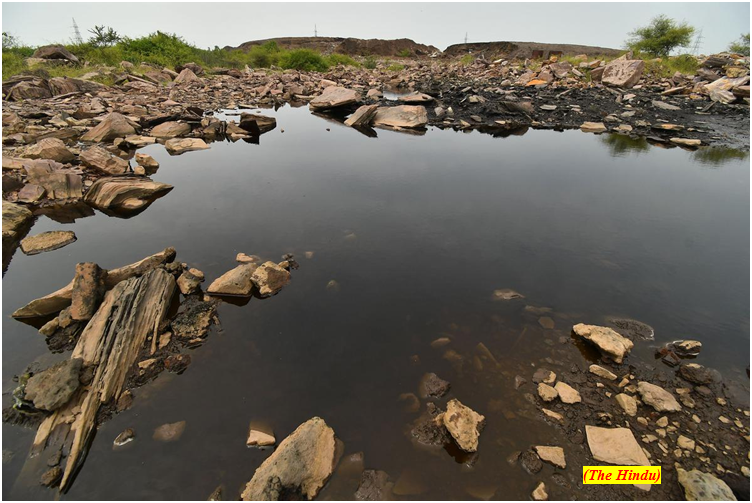Govt gives nod to procure Pralay ballistic missiles for armed forces (GS Paper 3, Defence)

Why in news?
- The Defence Ministry has given the nod to procure 120 Pralay ballistic missiles for the armed forces that are likely to be deployed along India's border areas along Pakistan and China.
- The Defence Research and Development Organisation (DRDO) had in December 2021 successfully conducted the maiden flight test of the indigenously developed surface-to-surface Pralay missile.
About Pralay Missile:
- Pralay is capable of striking and destroying targets in the range of 150-500 km, and can also be used in the night to attack enemy's targets.
- The missile has a speed of around 2,000 km per hour, and is equipped with an infrared or thermal scanner.
- The missile would be provided to the Air Force and the Navy.
- In the missiles of similar category, while China has Dongfeng-12 missiles, Pakistan possesses Ghaznavi, M-11 and Shaheen missiles.
Target:
- The Pralay missile has an accuracy of 10 metres which means it is capable of hitting within 10 metres of the target and causing damages.
- As Pralay has a short range, if launched from the country's eastern, western or northern frontiers, it would hit only the targeted areas.
- The Pralay has been developed with a capacity to tackle the interceptor missiles as well.
- After travelling a certain distance in the air, it is also capable of changing its route, which gives the missile the capability of completely destroying the enemy targets.
Rocket Force:
- The project will give a fillip to the key plan of creating a 'rocket force' for the armed forces.
- Late former Chief of Defence Staff, Gen Bipin Rawat was also a major proponent of creating such a rocket force.
Research throws light on secret language of photosynthesis
(GS Paper 3, Science and Tech)
Why in news?
- Scientists have been perplexed by the signals plants transmit to start photosynthesis, the process of converting sunlight into sugars, for decades. Academics from UC Riverside have finally cracked these earlier enigmatic communications.

Background:
- The nucleus, the administrative centre of a plant cell, sends messages to other cell parts compelling them to continue photosynthesis, as botanists have known for 50 years.
- These instructions are carried by proteins, and without them, plants cannot become green or grow.
Photosynthesis process as a symphony:
- Previously, they demonstrated that certain proteins in plant nuclei are activated by light, kicking off photosynthesis. These four newly identified proteins are part of that reaction, sending a signal that transforms small organs into chloroplasts, which generate growth-fueling sugars.
- They compared the whole photosynthesis process to a symphony.
- The conductors of the symphony are proteins in the nucleus called photoreceptors that respond to light. Both red and blue light-sensitive photoreceptors initiate the symphony. They activate genes that encode the building blocks of photosynthesis.
- The unique situation, in this case, is that the symphony is performed in two “rooms” in the cell, by both local (nucleus) and remote musicians.
- As such, the conductors (photoreceptors), who are present only in the nucleus, must send the remotely located musicians some messages over a distance. This last step is controlled by the four newly discovered proteins that travel from the nucleus to the chloroplasts.
A remedy for cancer cure:
- This work was funded by the National Institutes of Health, in the hopes that it will help with a cure for cancer. This hope is based on similarities between chloroplasts in plant cells and mitochondria in human cells. Both organelles generate fuel for growth and both harbour genetic material.
- Currently, a lot of research describes communication from organelles back to the nucleus. If something is wrong with the organelles, they’ll send signals to the nucleus “headquarters.” Much less is known about the activity-regulating signals sent from the nucleus to the organelles.
- The nucleus may control the expression of mitochondrial and chloroplast genes in a similar fashion.
Other applications:
- Human settlements on another planet would likely require indoor farming and creating a light scheme to increase yields in that environment.
- Even more immediately, climate change is posing challenges for crop growers on this planet.
Fewer polluted river stretches but worst stretches unchanged
(GS Paper 3, Environment)
Why in news?
- The number of polluted stretches in India’s rivers has fallen from 351 in 2018 to 311 in 2022 though the number of most polluted stretches is practically unchanged, according to a report from the Central Pollution Control Board (CPCB).
- The CPCB network monitors water quality at 4,484 locations in 28 States and seven Union Territories including rivers, lakes, creeks, drains and canals.

Terminology:
- Bio-chemical Oxygen Demand (BOD) exceeding 3.0 mg/L (milligram per litre) are identified as polluted locations.
- Two or more polluted locations identified on a river in a continuous sequence are considered as a “polluted river stretch.”
- A BOD less than 3 mg/L means the river stretch is fit for ‘Outdoor Bathing.’
- Further, stretches with a BOD exceeding 30 mg/L are considered ‘Priority 1,’ meaning, the most polluted and thus needing the most urgent remediation.
- There are five such categories with ‘Priority 2’ indicating a BOD of 20-30 mg/L and ‘Priority 5’ indicating 3-6 mg/L.
- The success of river-cleaning programmes are measured by the number of stretches moving from 1 to 2, 2 to 3 until those in 5 (requiring the least action) too reduce.
Key Findings:
- In 2018, when the CPCB published its report (after analysing stretches in 2016 and 2017), there were 45 stretches categorised in Priority 1, 16 in Priority 2, 43 in Priority 3, 72 in Priority 4 and 175 in Priority 5. The latest report counts 46 in P1, 16 in P2, 39 in P3, 65 in P4 and 145 in P5. All of the improvement thus, were in river stretches that required relatively lesser intervention.
- No change/ slight change in Priority I & II category of polluted river stretches indicates that further stringent actions are required for control of organic pollution from various point sources of pollution.
- While Gujarat and Uttar Pradesh had the maximum number of ‘Priority 1’ river stretches (6), Maharashtra had the maximum number of polluted river stretches i.e. 55, followed by Madhya Pradesh (19), Bihar (18), Kerala (18), Karnataka (17) and Uttar Pradesh (17).
- The overall decrease in the net number of identified polluted river stretches, which have shown improvement in the water quality, “could be attributed” to the efforts being made for development of infrastructure for sewage management, industrial effluent management, waste management and enforcement of regulations for prevention and control of pollution in rivers.
NGT Orders:
- In 2018, the National Green Tribunal had passed orders that the CPCB and the Jal Shakti Ministry monitor river pollution and ensure that all acts of river pollution were dealt with.
- Every State had to ensure that at least one river stretch was “restored” to the extent that it was at least fit for bathing. States were also directed to implement ‘Action Plans’ detailing how they were addressing different stretches of their rivers.




